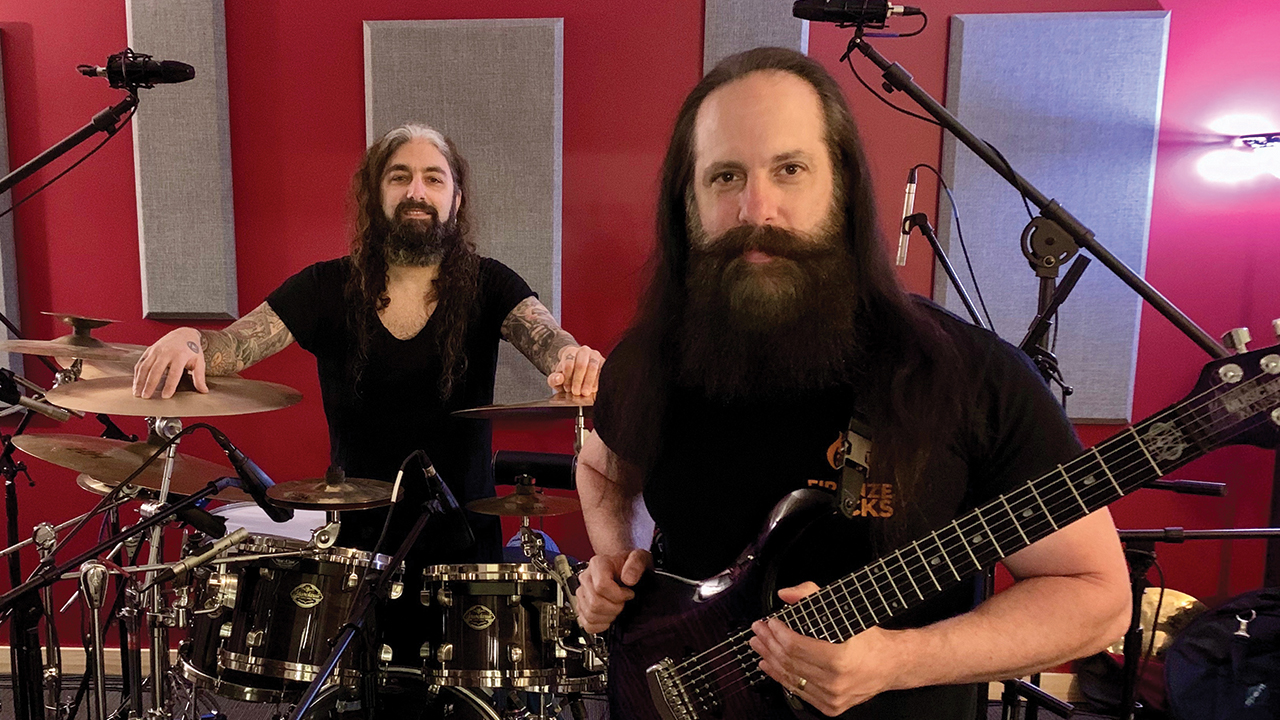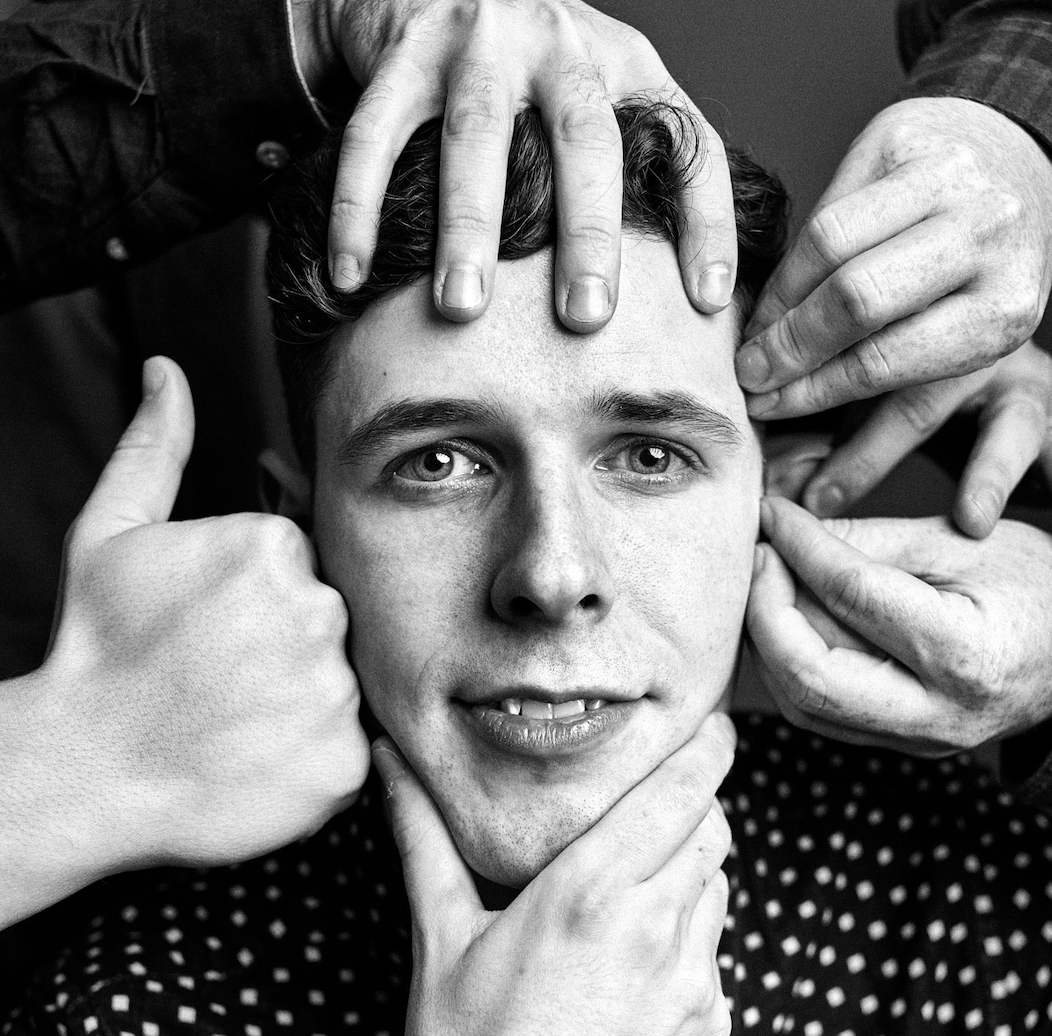“People will speculate that Mike Portnoy playing on my album means things are gonna change in Dream Theater. It’s not that at all”: When John Petrucci reunited with his old friend for solo album Terminal Velocity
Three years before the reunion actually took place, the pair got together in the studio for the first time in a decade – and the guitarist got their first song wrong

In 2020 John Petrucci returned with his new solo album, Terminal Velocity. It featured his former Dream Theater colleague Mike Portnoy on drums, marking their first work together in a decade. Portnoy would rejoin the band that made his name in 2023 – and of course the possibility was the subject of speculation when Petrucci told Prog about his second instrumental record.
“You can’t help but change,” John Petrucci says when asked if he’s altered as a person since the release of his last solo album back in 2005. “Hopefully it’s a good change and a good evolution. We’re all trying to become better: better people, better artists, better musicians. And so if there’s any change, hopefully it’s in that direction. But I don’t think anything really drastic has changed – except for having a huge beard now that I didn’t have then.”
A lot has happened in the 15 years since the guitarist put his name to Suspended Animation. The US elected Barack Obama; Twitter and iPhones became things, and his band Dream Theater lost a founding member; but more on that later.
Musically, at least, it’s comforting to know that Petrucci is still reliably firing out prog metal and guitar wizardry in 2020, like a fizzing Roman candle, decades after first emerging on the scene.
For someone who plays so speedily, it’s a tad ironic his second solo album took so long to arrive. Terminal Velocity, however, feels like a well-appointed sequel to Suspended Animation, with fretboard gymnastics married to upbeat prog metal as well as other offshoots like swaggering rock, blues and jazz – all with a tone that may very well make guitar nerds weak at the knees.
The juicy subplot, though, is that Petrucci worked with ex-bandmate and long-time friend Mike Portnoy for the first time since the drummer left Dream Theater in 2010, in what feels like an emotional long-lost family reunion.
The album’s nine tracks were recorded in the midst of the coronavirus pandemic, and as the virus raged on outside, New Yorker Petrucci was bunkered up in the studio. It bought him extra time, on top of a break in Dream Theater’s touring schedule which had initially spurred him on to take the dive into album number two after 15 years.
Sign up below to get the latest from Prog, plus exclusive special offers, direct to your inbox!
“We played two shows in London and got home February 28,” he says. “And I had a few months off before the next Dream Theater tour was supposed to happen in April. Obviously that all got postponed, so I was like, ‘I’m going to have the time – I’m going to do this solo album. I’m never going to have these chunks of time off again.’ But the pandemic happened, and then I was sitting there more time than I thought. So I just took advantage of that, and got this album written and recorded basically from March through May of this year.”
Five of the tracks were written during lockdown, with the other songs already in gestation, having been played on the guitar-shredding G3 guitar tours or at instructional camps.
Petrucci fans will get their fill on Terminal Velocity, and there are enough dalliances into different sounds for curious ears to wrap around. There’s even a brief dip into giddy pop punk in the endearingly titled Happy Song, which, if you close your eyes for a brief moment, almost takes you to an LA frat party in the early 2000s – until the lead guitar returns with a stinging slap in the face.
When I did my first solo album, I didn’t want to use Mike because I wanted to keep it separate from Dream Theater
At the album’s core, though, is the typical Dream Theater chutzpah, smoothed out a bit to give the guitar more room to breathe. One highlight is Gemini, an eight-minute track mainly written around the band’s Images And Words-era in the early 90s, which at one point snakes from exuberant prog metal fit for a computer game soundtrack to Latin jazz. The lack of a proper recording of the original Gemini, however, meant it was not an easy job translating it through to 2020.
“It was a really old early 90s song that I used to play at guitar clinics,” Petrucci explains. “I never properly recorded it; there’s some YouTube bootlegs of it. I had to find those bootlegs, and it’s basically like a guy at a guitar clinic with a bad audio, trying to film it. I had to use that as my template to remember the song.”
He doesn’t feel the pandemic’s maelstrom of negativity and uncertainty infiltrated the newer tracks. “The songs by nature just have a very lively, energetic vibe to them – which might seem like the opposite of what was going on in the world during that time, especially in New York. But I didn’t let what was happening seep into the creative process at all. If anything, it’s like an escape from it.”
One of the world’s most celebrated virtuoso guitarists, Petrucci has been a driving force behind Dream Theater since their inception in the 1980s. His musical journey began with studious practising of the guitar, before playing Iron Maiden and Rush covers at Berklee College Of Music alongside Portnoy and bassist John Myung, who between them would form the nucleus of Dream Theater.
Petrucci’s gentle voice and mild manner belies some of the fury that zaps from his fingers, but his solo material – as well as the music made during his day job – continues to ooze plenty of nuance, with melody and songwriting remaining key.
And so to the moment when Petrucci and Portnoy reunited. The drummer – who shocked the prog world by quitting Dream Theater in 2010 – spent around six days recording tracks for the album, basing his work on full programmed drums already put down by Petrucci and his engineer James ‘Jimmy T’ Meslin.
He counted it off and started playing… and I came in with the wrong song! I didn’t read his mind
Four-stringer Dave LaRue, who’d worked with Petrucci on Suspended Animation and the G3 tours, and is also Portnoy’s bandmate in Flying Colors, recorded bass on the tracks too.
“Dave came in and did an amazing job, but drummer-wise, I wasn’t sure,” Petrucci says. “When Mike was in the band and I did my first solo album, I purposely didn’t want to use him because I wanted to keep my solo album separate from Dream Theater.
“But now he’s not in Dream Theater any more, so it was a perfect opportunity to have him play on it. I had told him I was working on it previously, and he – maybe unbeknownst to him – planted the seed. He was like, ‘Hey, if you ever need a drummer, I’m here.’ But it kinda just like stuck in my mind, like: ‘Hey, Mike would be great on it.’ It was really cool having him come in. He did an awesome job.”
While Petrucci and Portnoy ran through some parts of the album, it was mainly business – there were no frolics through The Dance of Eternity or the whole of A Change of Seasons. But what was it actually like when they were first placed opposite each other in the studio for the first time in a decade?
“At one point I picked up my guitar – we were going to work on something – and he’s like, ‘Okay, this is the first thing we’re going to play in 10 years together. Just guess what it is,’” Petrucci says.
“And he counted it off and started playing something… and I came in with the wrong song! I didn’t read his mind. I think he was playing the first song that [the pre-Dream Theater band] Majesty ever wrote. I thought he was going to play Metropolis. That was totally wrong!”
I get to reunite musically with Mike Portnoy and then still be in Dream Theater with Mike Mangini
The guitarist is clear on one thing, though: the rekindling of the Petrucci-Portnoy working relationship isn’t going to have any effect on Dream Theater – much to the disappointment of some keyboard warriors who are desperate for the drummer to rejoin. “People will speculate that Mike playing on my album all of a sudden means that things are gonna change in Dream Theater, and it’s not that at all,” Petrucci confirms.
“Mike Mangini is the drummer in Dream Theater. That’s not changing, and I want to make sure that people don’t extrapolate something that’s just not the case, you know? I think that’s really important, for a number of reasons.
“For me, selfishly, it’s great because I get to reunite musically with Mike Portnoy and have him play drums on my album, and then still be in Dream Theater with Mike Mangini. So I get to play with two of the greatest drummers in the world.”
What about a Portnoy guest spot at a Dream Theater show, at least? “It’s not something we’ve discussed,” Petrucci says. “So I guess I don’t really have an answer to that. Nope, no plans.”
Looking forward, the guitarist continues to write: in fact, he has a folder on his computer containing around 100 song ideas. Don’t expect any surprising slices of EDM dance music or hip-hop, though. Petrucci sticks to what Petrucci knows best.
“The style on Terminal Velocity, that spans across the songs, that’s me – that’s my musical guitar playing identity,” he says. “So anything in that folder is going to be in that zone. I don’t think there’s anything on there that would shock people.
“And I do try to, like, infuse different stylistic elements, whether they be jazz or gypsy jazz or Latin feels. I think that’s considered commonplace in my style anyway. You even hear that Dream Theater as well – we do span a lot of different styles.”
A writer for Prog magazine since 2014, armed with a particular taste for the darker side of rock. The dayjob is local news, so writing about the music on the side keeps things exciting - especially when Chris is based in the wild norths of Scotland. Previous bylines include national newspapers and magazines.





